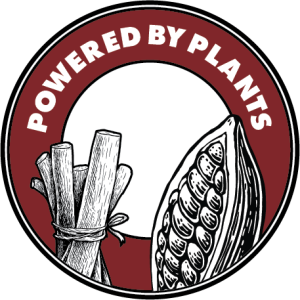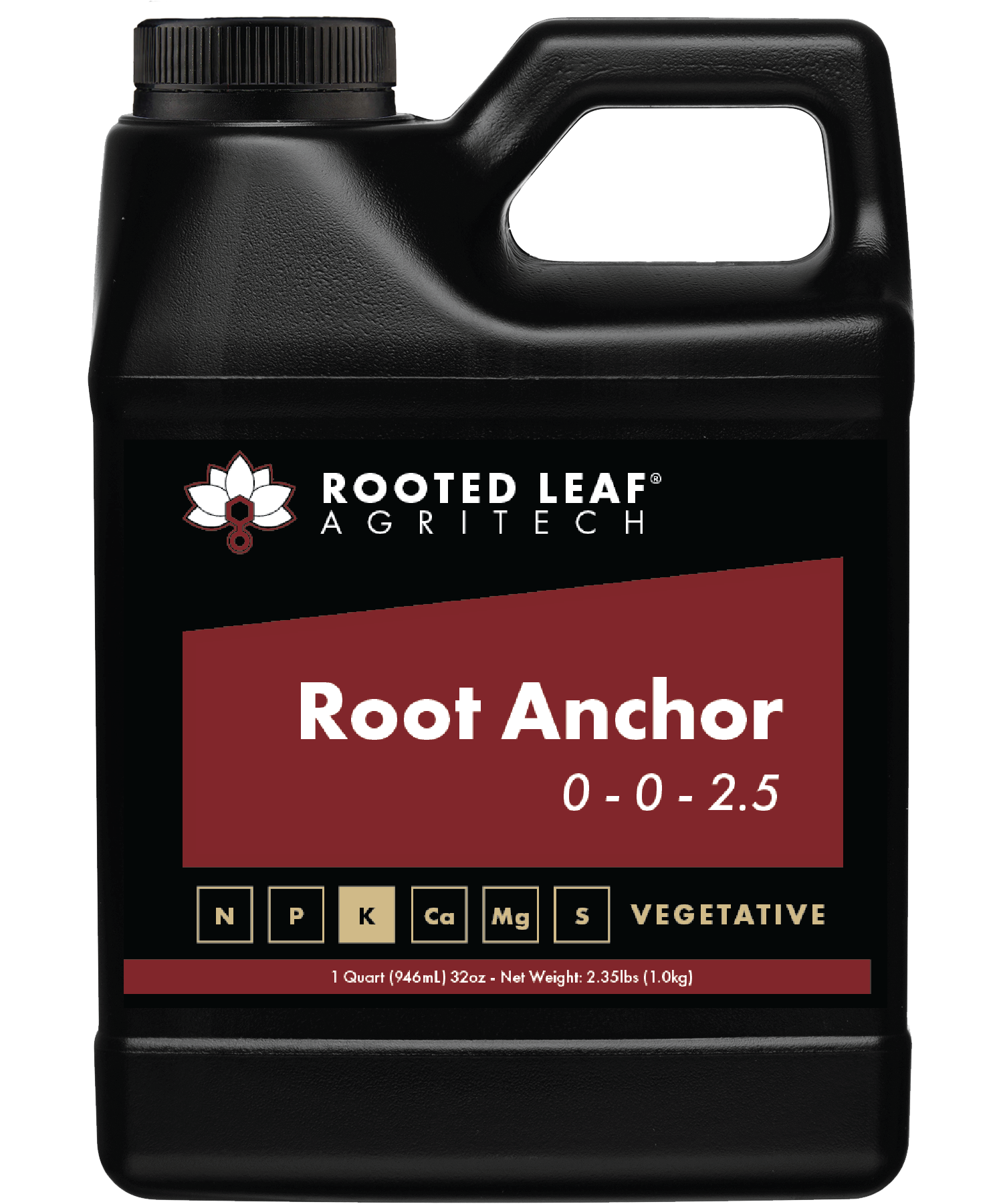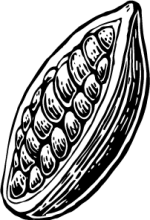Root Anchor
Root Anchor is our humic acid-based soil conditioner.
It features an advanced utilization of rare Ecuadorian Arriba Nacional cacao beans – high-fat, un-alkalized, and rich in nutritional compounds that benefit soil biology in ways nothing else can.


Root Anchor
0 - 0 - 2.5 with 4% Humic
The Problem
As plants grow, they displace nutrients from the soil. Feeding nutrients back into the soil can damage the soils ability to hold and release those nutrients to plants, eventually leading to root decay, nutrient lock-out, and salt build-up.
The Solution
Root Anchor actively conditions grow mediums, allowing them to release higher amounts of nutrients to plants. This results in improved root architecture and decreased salt buildup.
Root Anchor enriches the soil and improves its qualities through its ultra-premium sea plant and humic acid extracts.
For drums and totes, please call or email us.
Activated Carbon Complex
We start with unoxidized North American humic to make our own liquid extract in-house with certified organic licorice roots and high-grade cacao. That’s part of the reason why Root Anchor is one of the best-performing soil conditioners and root enhancers in the world.

Root Anchor is our humic acid supplement.
It is a highly concentrated blend of our full-spectrum humic extract with a fermented cacao and licorice root complex.
Every gallon of Root Anchor contains the equivalent of more than 10 pounds of raw humic acid, making it one of the most concentrated liquid humic acid products available.
Root Anchor is derived from: Fermented plant material (Glycyrrhiza glabra and Theobroma cacao), potassium citrate, potassium acetate.
Root Anchor weighs 9.5 pounds per gallon.
1 mL of Root Anchor delivers the equivalent of 164 ppm of CO2
-
 Potassium - 2.5%
Potassium - 2.5% -
 Carbon - 17%
Carbon - 17%
Humic acid - 4%

Licorice
The roots of licorice plants (Glycyrrhiza glabra), which are considered weeds in their native region of Southern Europe, take more than five years to mature before they are ready to be harvested.
Unique saponins found within the roots have been used as medicine for over 5,000 years. One of these saponins, glycyrrhizic acid, is 50 times sweeter than sugar.
Cacao
A member of the mallow family, the cacao plant (Theobroma cacao) has been revered for over 4,000 years in ancient Mesoamerica.
The fermented & ground beans contain rare alkaloids and fatty acids that have been prized as a “food of the Gods” around the world.

Feeding Instructions
Soil & Coco
-
Measure1 – 6mL per gallon of feedwater
-
Mixsolution well – no pH adjustment or aeration needed
-
Applyimmediately and discard any remaining solution
Foliar
-
Measure1 – 2.5mL per gallon of spray solution
-
Applyimmediately and discard any remaining solution
-
2 - 3xfoliar feeds per week until the beginning of week 3 in bloom

